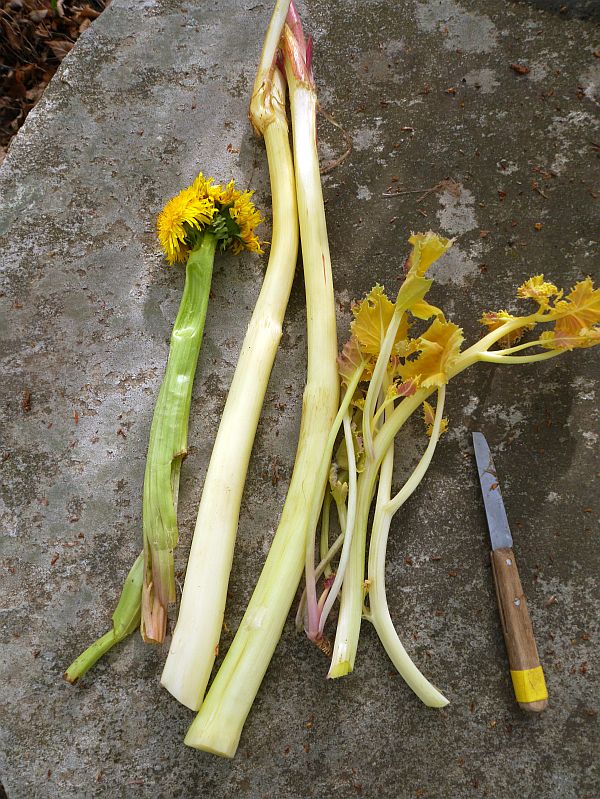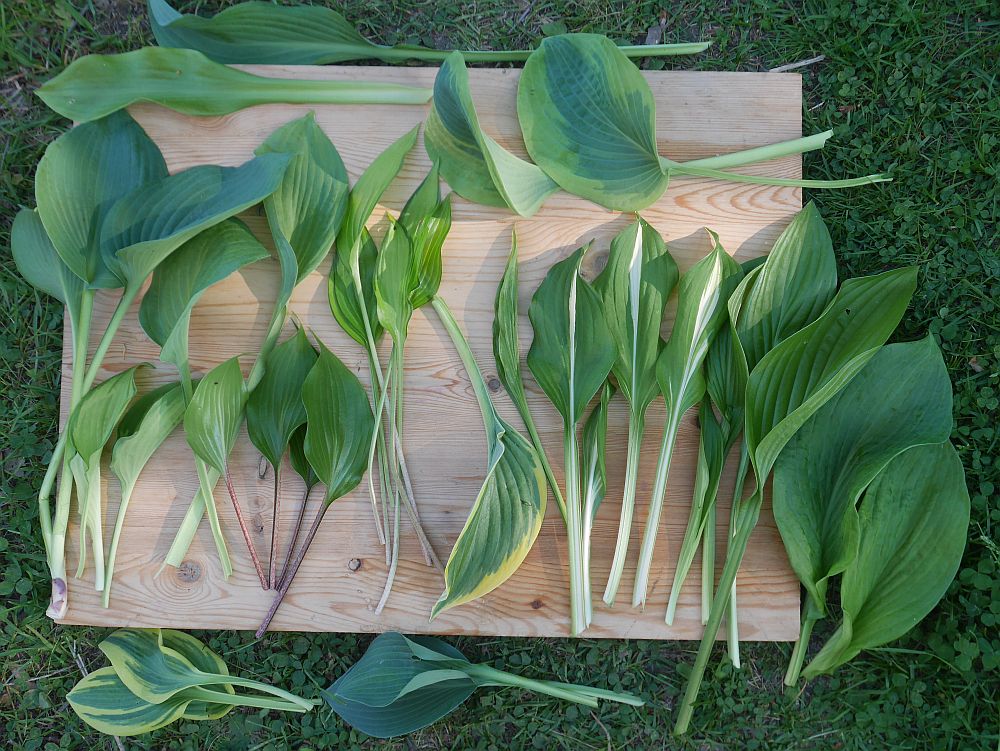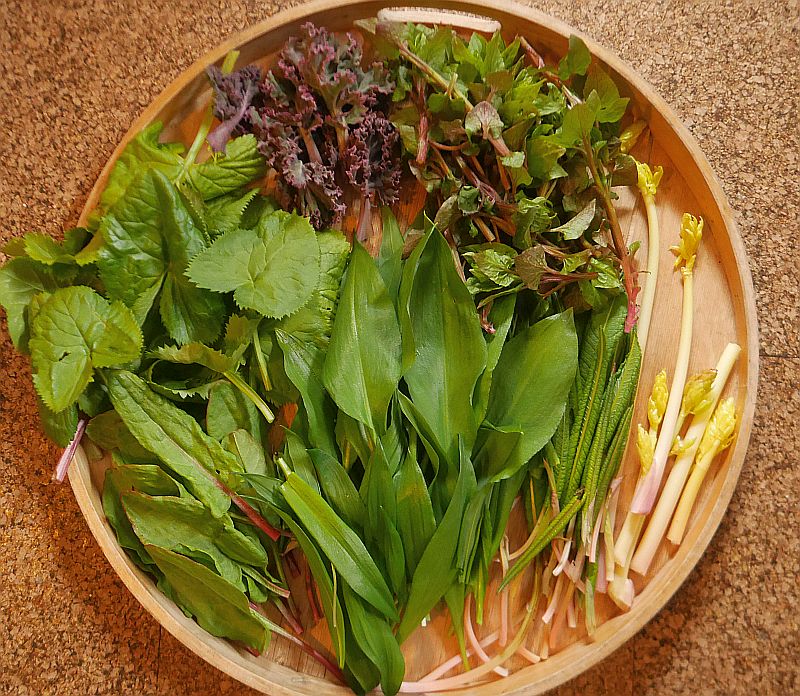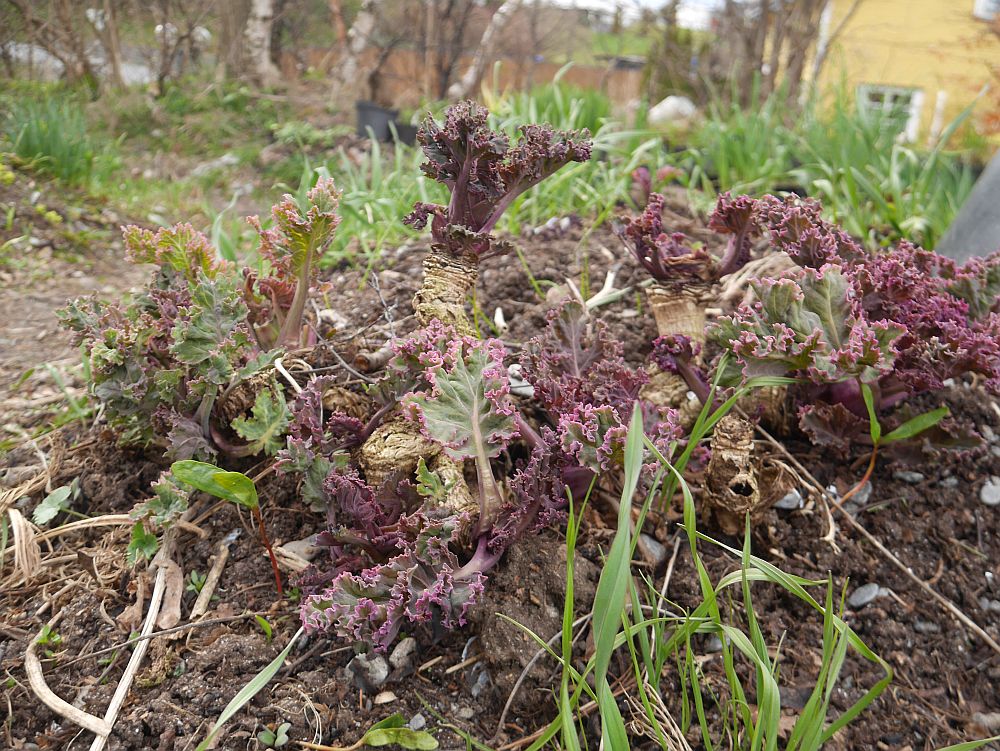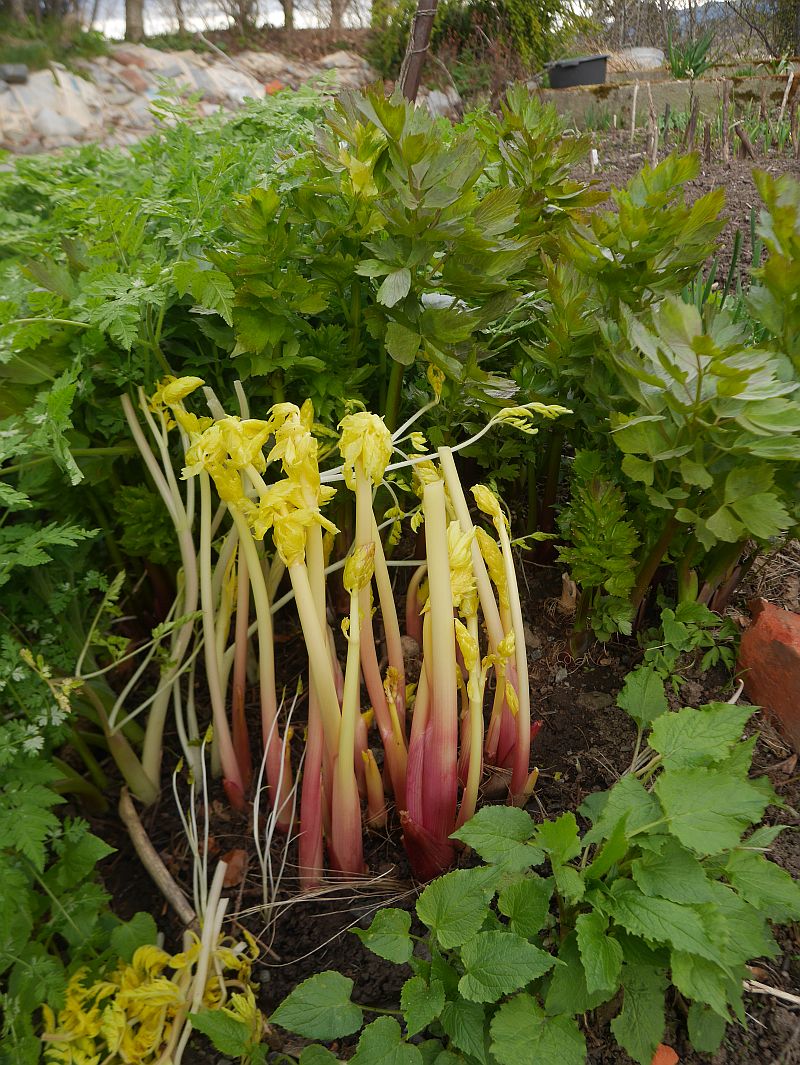I 2021 publiserte Norsk Hagetidend en serie artikler jeg hadde skrevet om 10 av mine favoritt flerårige grønnsaker til Norsk Hagetidend. Alle artiklene kan nå bli lastet ned ved å klikke på lenkene nedenfor!
English: In 2021, I wrote a series of two page articles about my favourite perennial vegetables for Norsk Hagetidend (the magazine of the Norwegian Horticultural Society) in Norwegian. The complete series can be found below.
The plants are (scroll down to all the articles):
February 2021 Caucasian spinach / stjernemelde (Hablitzia tamnoides)
Download (PDF, 603KB)
March 2021 Horseradish / pepperrot (
Armoracia rusticana)
Download (PDF, 339KB)
April 2021 Sea kale / strandkål (
Crambe maritima)
Download (PDF, 288KB)
May 2021 Nodding onion / prærieløk (
Allium cernuum)
Download (PDF, 329KB)
June 2021 Udo (
Aralia cordata)
Download (PDF, 246KB)
July 2021 St, Jansuien / sankthansløk (
Allium x cornutum)
Download (PDF, 248KB)
August 2021 Cherokee spinach / gjerdesolhatt (
Rudbeckia laciniata)
Download (PDF, 256KB)
September 2021 Hosta / bladlilje (
Hosta spp.)
Download (PDF, 250KB)
October 2021 Patience dock / hagesyre (
Rumex patientia)
Download (PDF, 236KB)
November 2021 Persian shallot / persisk sjalott (
Allium stipitatum)
Download (PDF, 278KB)


 The St George’s mushrooms are growing to the right of the chair
The St George’s mushrooms are growing to the right of the chair  The seakale / strandkål bed is full of sandleeks / bendelløk
The seakale / strandkål bed is full of sandleeks / bendelløk
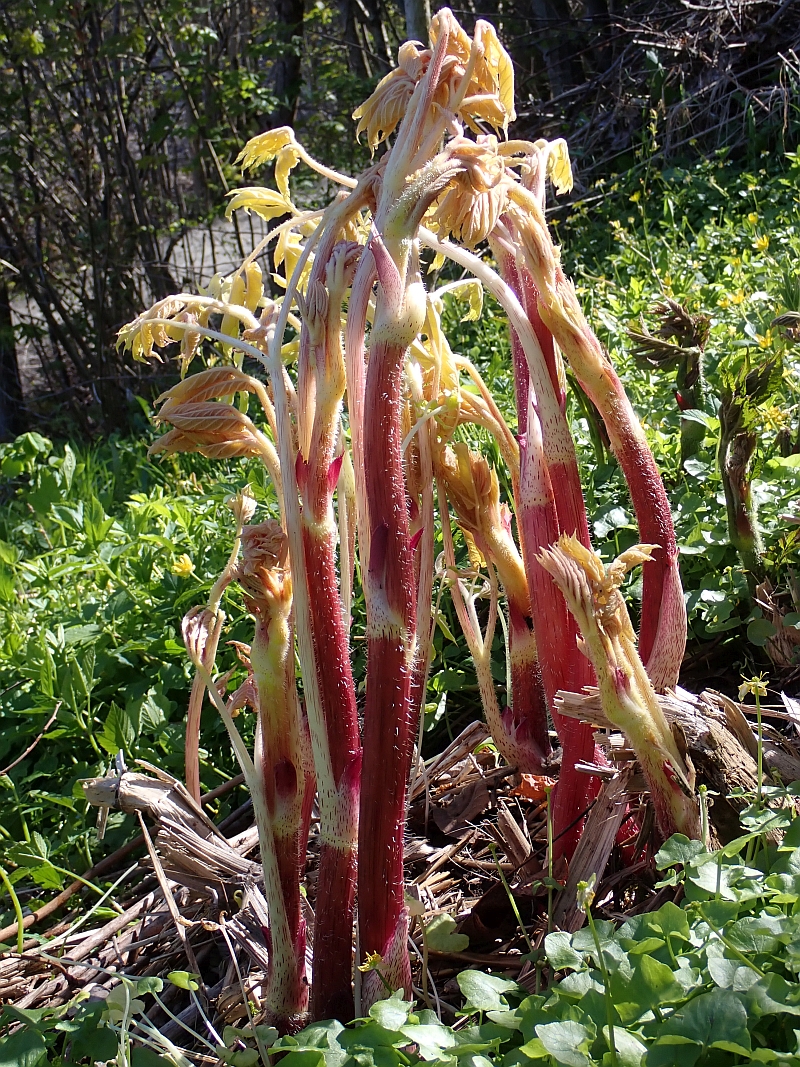
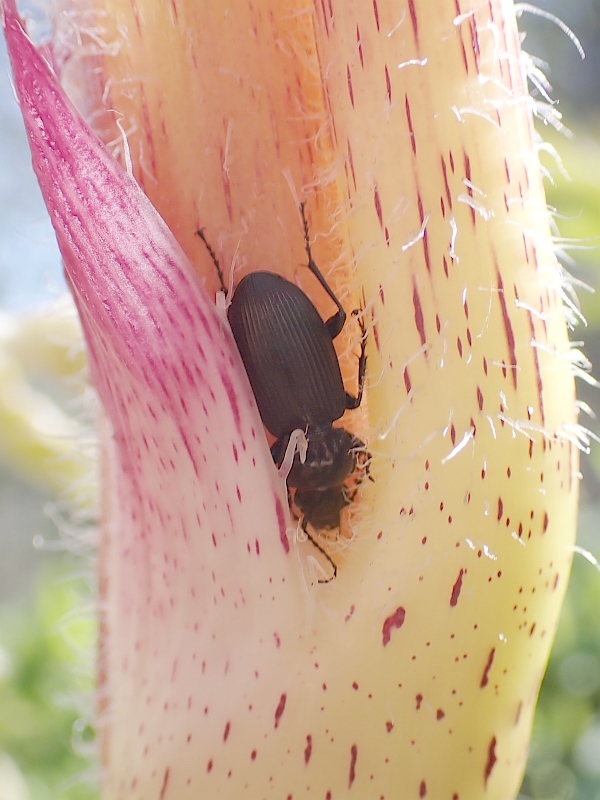

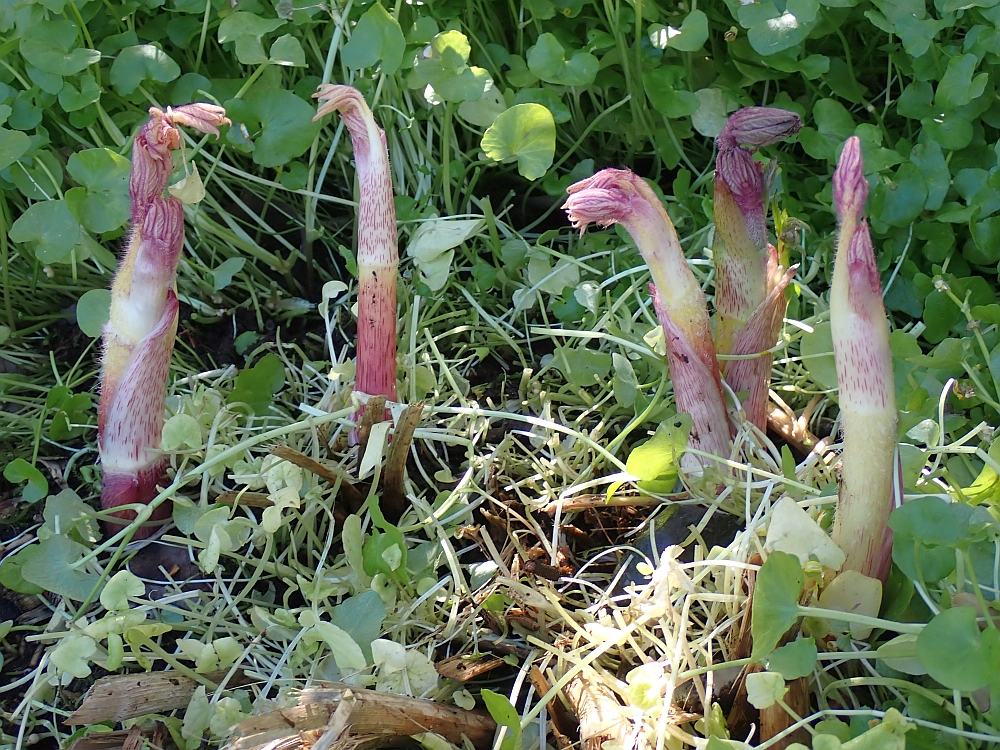




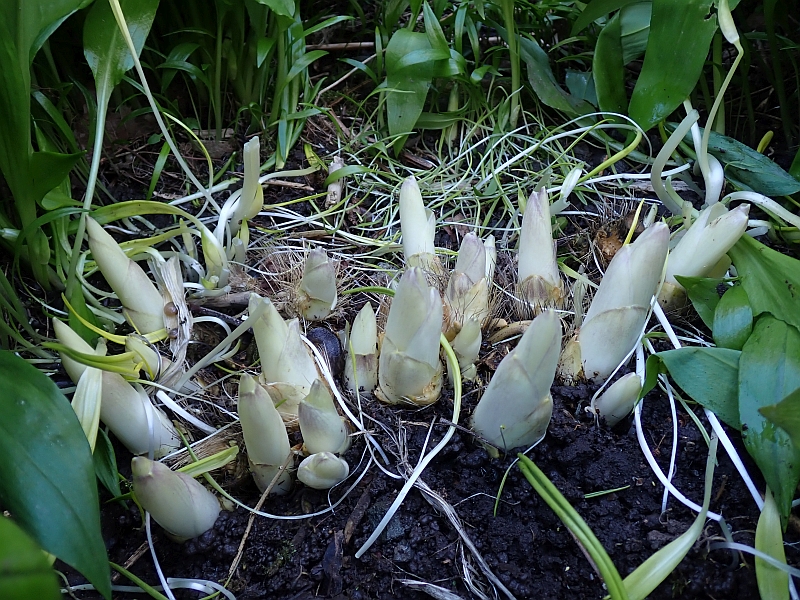
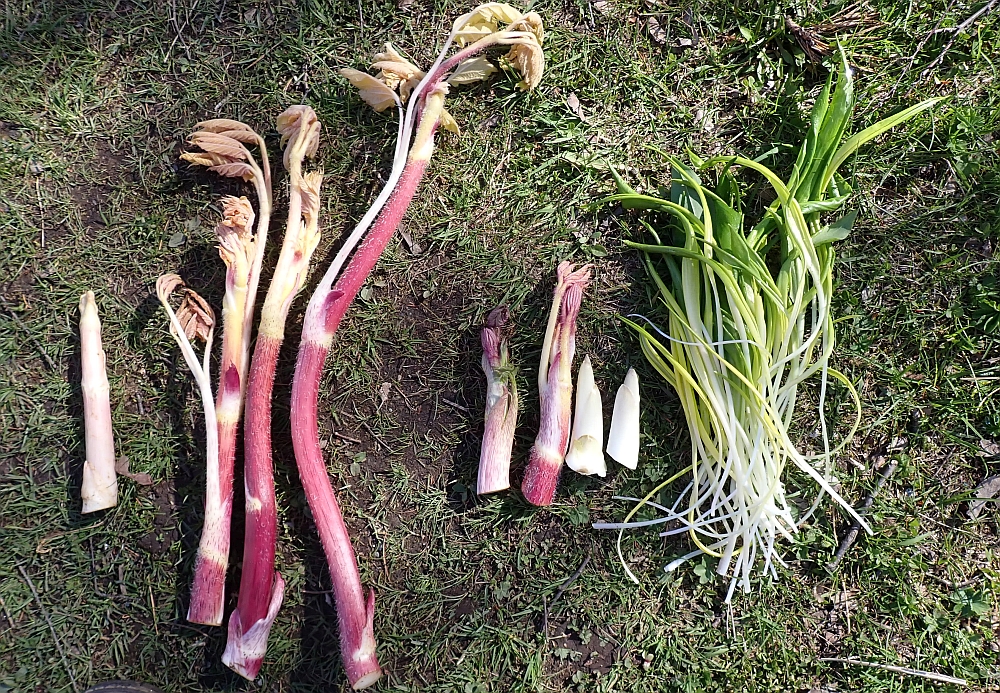
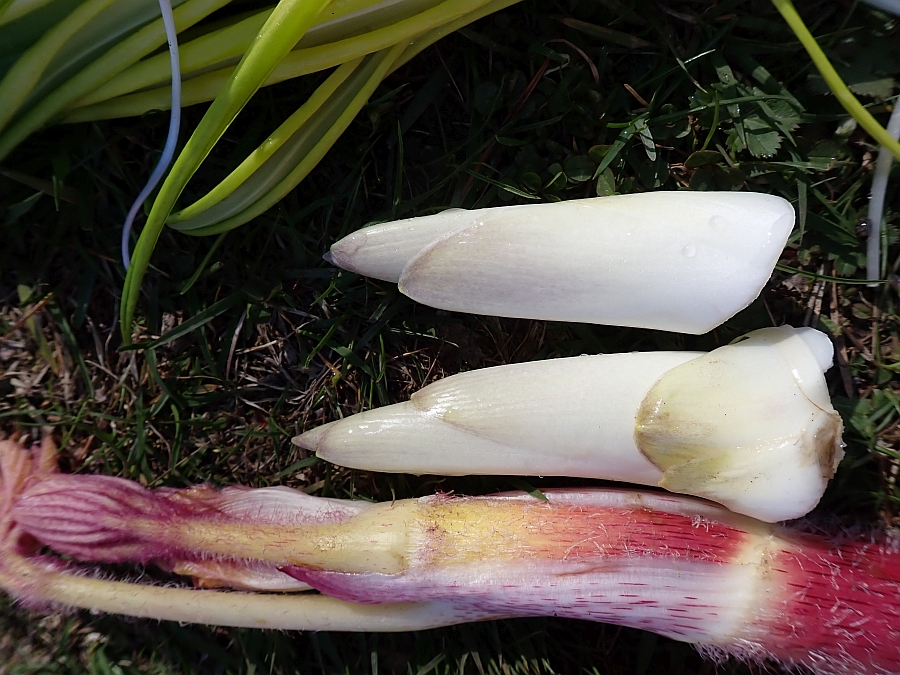
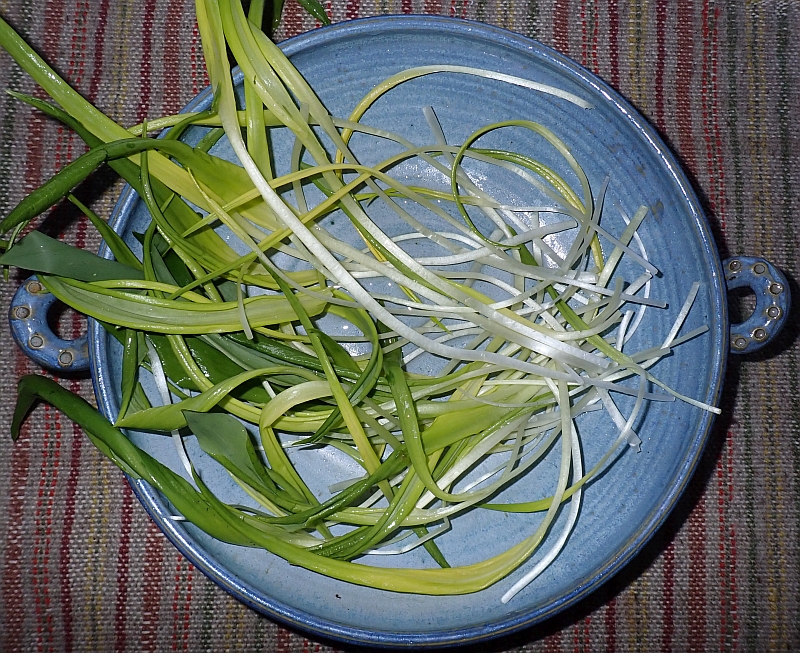
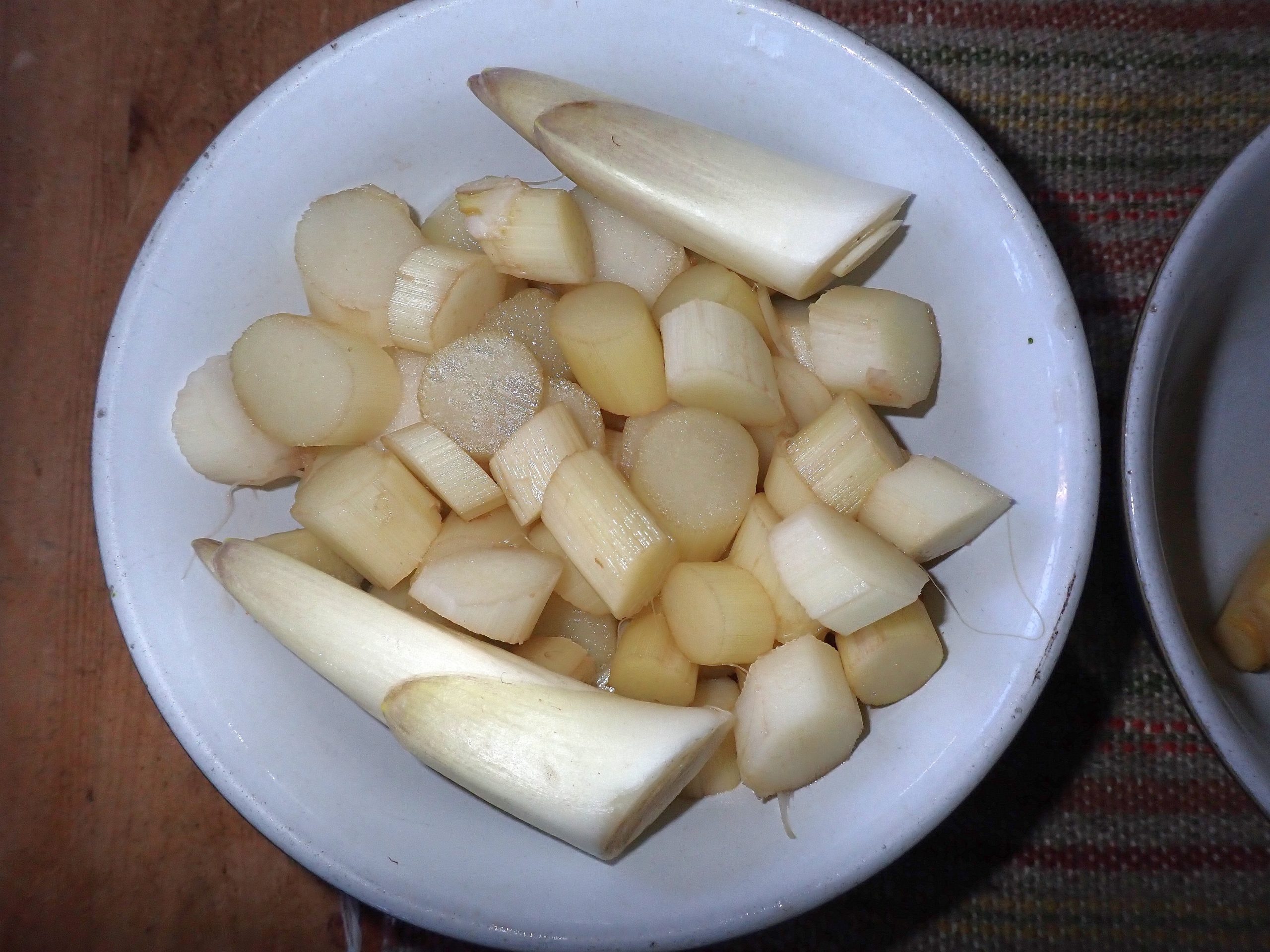

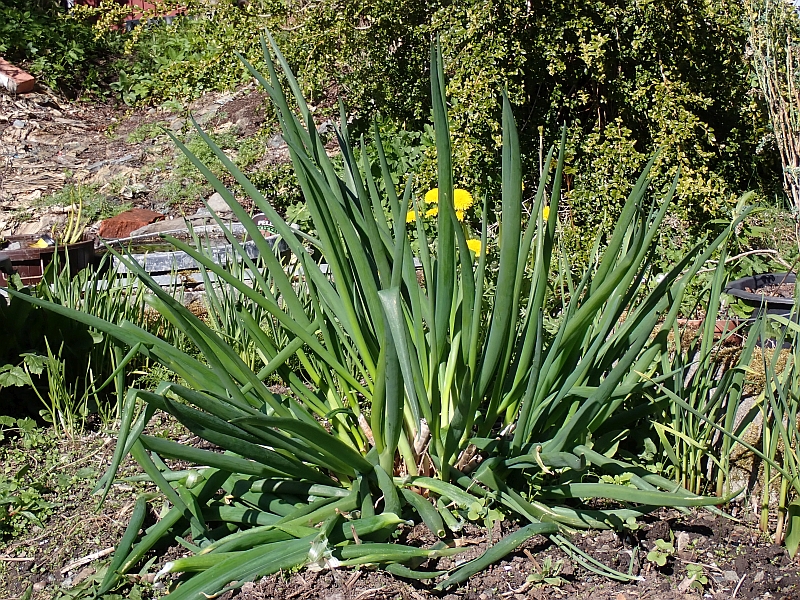


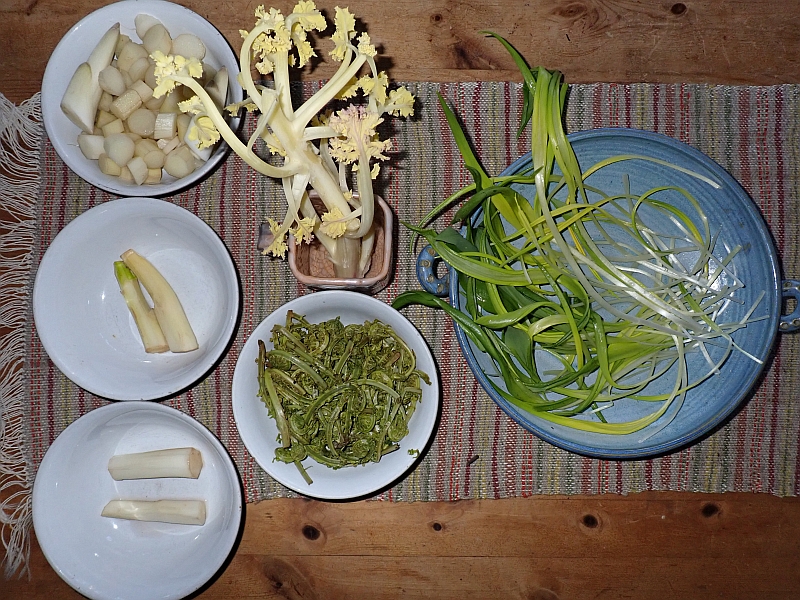
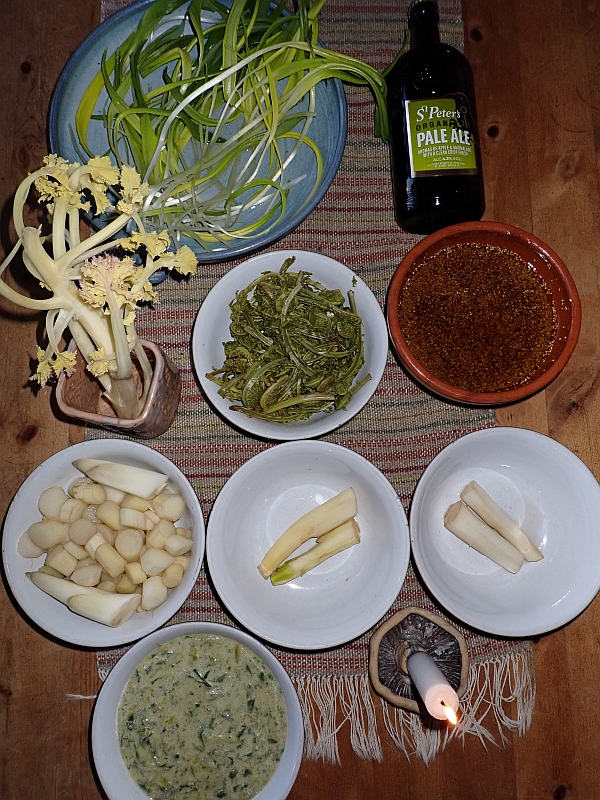
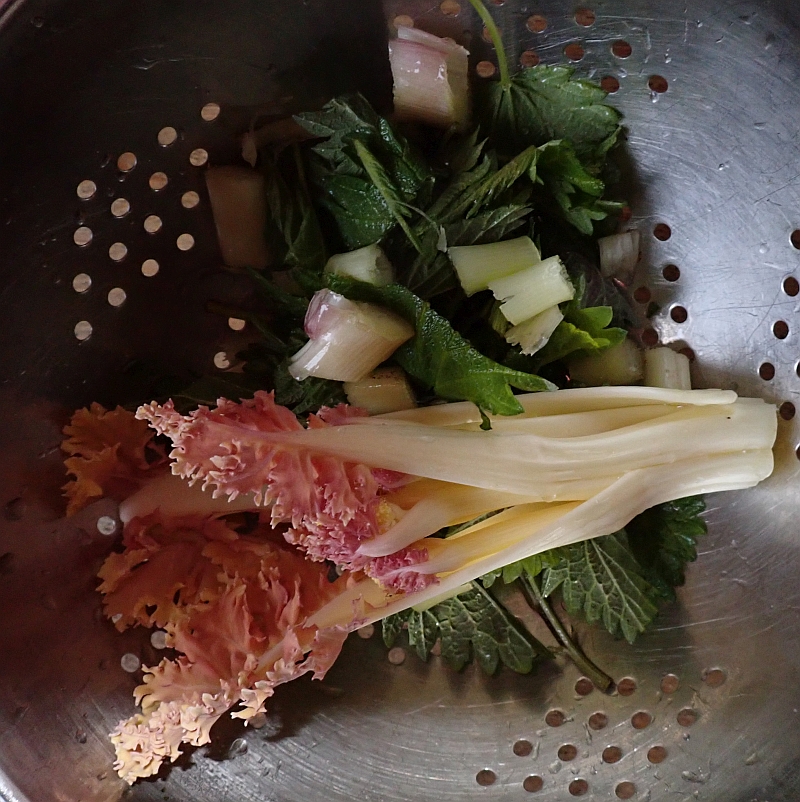

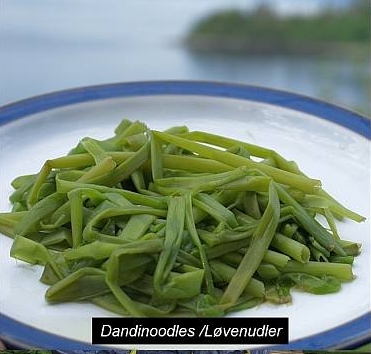 3. Allium paradoxum var paradoxum isn’t a plant you’ll want in your garden as this form has bulbils which can spread invasively. I was sent this 20 years ago from a garden in Sweden as Allium triquetrum but it wasn’t that one. I never considered either of these invasive Alliums as hardy enough to be a problem here and this one has slowly colonised the space around my oldest Hablitzia tamnoides. With warmer winters I have started more aggressive harvesting of this one.
3. Allium paradoxum var paradoxum isn’t a plant you’ll want in your garden as this form has bulbils which can spread invasively. I was sent this 20 years ago from a garden in Sweden as Allium triquetrum but it wasn’t that one. I never considered either of these invasive Alliums as hardy enough to be a problem here and this one has slowly colonised the space around my oldest Hablitzia tamnoides. With warmer winters I have started more aggressive harvesting of this one. I now harvest both the young leaves, the tops, in particular the bulbils to keep it under control. They are delicious both raw in mixed salads and cooked.
I now harvest both the young leaves, the tops, in particular the bulbils to keep it under control. They are delicious both raw in mixed salads and cooked.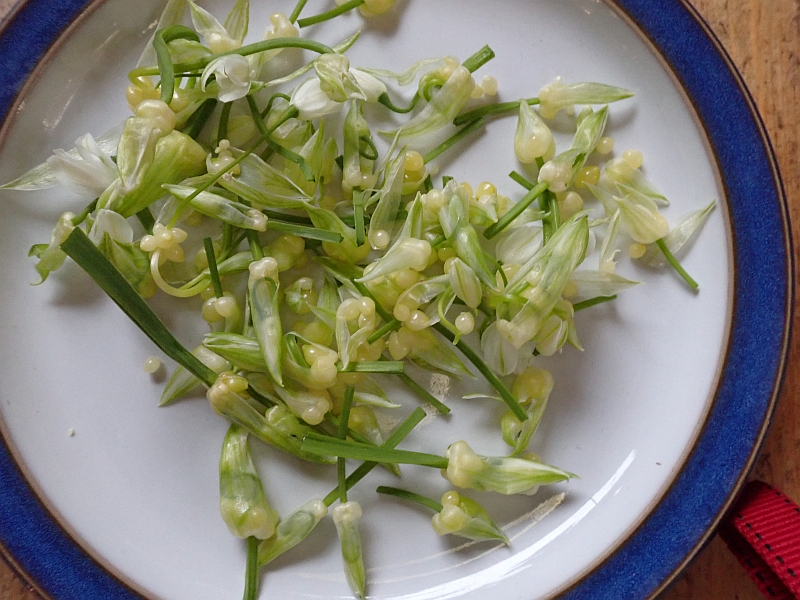

 I harvested some blanched sea kale (Crambe maritima) too and I found a fasciated dandelion to decorate the salad
I harvested some blanched sea kale (Crambe maritima) too and I found a fasciated dandelion to decorate the salad
 The udo was peeled
The udo was peeled 